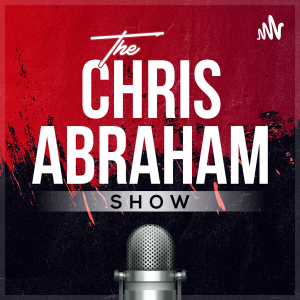
The Chris Abraham Show
Comedy
tl:dr: Just a 55-year-old cisgender white male mansplaining his own self-importance. But good. Full Summary: The musings of Chris Abraham as he aspires to know the world and himself while getting healthy, losing weight, becoming fit, and running his small business while living in South Arlington, Virginia. Walk with him a while and see what's up.
Location:
United States
Genres:
Comedy
Description:
tl:dr: Just a 55-year-old cisgender white male mansplaining his own self-importance. But good. Full Summary: The musings of Chris Abraham as he aspires to know the world and himself while getting healthy, losing weight, becoming fit, and running his small business while living in South Arlington, Virginia. Walk with him a while and see what's up.
Twitter:
@chrisabraham
Language:
English
Contact:
2023525051
Website:
http://chrisabraham.com/
Email:
chris@gerriscorp.com
Becoming an Always-On Meshtastic Router by Accident
Duration:00:51:51
S10E2 Deportation Industrial Complex Goes Full DWOT
Duration:02:02:46
S10E01 Uncle Chris Gives an Update
Duration:00:32:16
Inside the Empire: Why the Holy Family Were Never Refugees
Duration:00:05:25
Inside the Empire: Why the Holy Family Were Never Refugees
Duration:00:52:12
The Holy Family’s Journey: A Historical Look Beyond Modern Refugee Language
Duration:00:05:25
The Holy Family Were Not Refugees: Understanding Their Journey in Historical Context
Duration:00:56:37
Sequestered Carbon: Why America’s Private Firearms Change the Balance of Power
Duration:00:07:06
Sequestered Carbon: How Half a Billion Firearms Quietly Rewrite Power in America
Duration:00:54:08
The People Who Fill The Vacuum: Why Power Never Leaves A Space Empty
Duration:00:06:19
When The State Isn’t Enough: Cash, Guns, and the Shadow Governments We Pretend Don’t Exist
Duration:02:27:42
Session 23: Fireball at Dawn — The Road, the Witchmark, and the Shadowless Halfling
Duration:00:07:37
Session 23: The Shadowless Companion and the Vineyard Truce
Duration:00:56:40
Session 22: Fire in the Webs – The Battle for Argynvostholt
Duration:00:07:57
The Mists of Argynvostholt: A Curse of Strahd Session Chronicle
Duration:01:04:11
Cities, Money, and the Great Escape
Duration:00:06:51
The Age of Portable Money
Duration:00:59:15
Rumspringa for the Republic
Duration:00:06:44
The Republic Always Wins
Duration:01:13:45
VIDEO: YOU BECOME WHAT YOU PRETEND TO BE
Duration:00:07:12